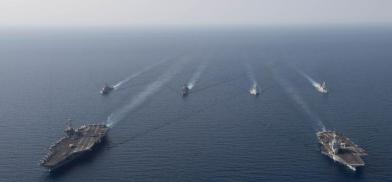Big-power rivalry is becoming more intense in the Indian Ocean Region
The role of China will have a direct bearing on the Indo-Pacific security matrix given China’s warm relations with most of the Indo-Pacific states

The Indian Ocean Region (IOR) has become the economic and political center of gravity in the Indo-Pacific paradigm. The geopolitics of the region has increased the importance of its small island states.
The small island countries, which are considered to be of immense strategic significance, need investment which limits their strategic autonomy, thereby giving big powers scope to meddle in their foreign policies. This makes the geostrategic climate more volatile and murky. They are increasingly becoming important in the geopolitical architecture of IOR.
Their strategic location gives them importance. They are also in proximity to sea lanes which are critical for the global economy. Then they are resource-rich and thereby hotspots for investments. Also, they are primary members of the climate change framework.
Global powers in IOR
Powers like the US, China, Russia, the UK and France are increasingly trying to make significant gains in the region. India is a basic element of the entire Indo-Pacific discourse and IOR, and therefore it has the greatest stakes in the region.
The IOR region forms the bedrock of the security architecture of the Indo-Pacific.
There are seven maritime chokepoints in the world, and IOR is home to four of them: Suez Canal, Strait of Malacca, Bab-el-mandeb and Strait of Hormuz. This divides it into its eastern and western regions. The presence of global powers in naval zones, trade and infrastructure of these small island states makes them legitimate contenders in the IOR.
It is important to draw a landscape of the big powers who have invested in these small islands and larger IOR for infrastructure building, shipbuilding, naval modernization and humanitarian aid.
China
The island strategy of China makes its economic engagements as a military power projection, given its growing role in the South China Sea. It has increased its footprint in the IOR region, specifically hurting India’s strategic interests. It has been promoting the ‘China Dream’ in the IOR to encircle India in its immediate neighbourhood, raising concerns in the Indian strategic community.
This has started an uncalled-for competition in the IOR with other powers like the US, the UK, France and Japan to checkmate China. This has led to greater convergence amongst these countries to put up a joint front against China’s expansionist outlook. For China, every state apparatus must serve the foreign policy objective and every foreign policy objective has to be in line with materializing its superpower endeavour.
There is also talk of US offshore balancing which traditionally did help it to put some balance in regional politics. The growing trade war and maritime competition with China is putting extra pressure on the US to exert more to protect the global order from going further downhill.
India
India is at the head of the Indian Ocean and has almost all of its economic growth wedded to IOR. The role of India in the IOR was limited to non-geoeconomic factors but the rise of China has a direct bearing on its strategic interests. It has always enjoyed warm relations with the island countries. The pearl of strings strategy of China has made thinkers and policy makers in India rethink on the subject. It has therefore joined the QUAD and Indo-Pacific paradigm to put a mutually workable model in practice.
India has widened its horizons to reach the South-East Asian economies and has been vocal on the South China Sea dispute. It has come up with a Blue Economy draft to unveil its tremendous potential. There has been a call to engage with all the island countries to realize its dream of a peaceful Indo-Pacific region and its support for a multilateral order.
Russia and France
The emergence of Russia in the IOR is less talked about. Specifically in the western IOR, it is in collaboration with the Saudis and other countries to upscale its presence in the region. The Ukraine war and the subsequent sanctions will have an impact on its global power projections.
France is placing its bets on the economic aspect of its foreign policy objectives vis-a-vis IOR. It has bilateral and multilateral engagements with some countries in the IOR and has a working Indo-Pacific strategy. It is also striving to uphold the multipolar world and freedom of navigation. This has necessitated its convergence of interests with India and the US in the Indo-Pacific theatre.
IOR is becoming increasingly important for the future of global geopolitics. It has opened a new theatre where big powers will lock horns and it will have long-term consequences for the region and the world. The India-US engagement forms the bedrock of the security architecture; countries like Japan, France and the UK also contribute significantly to it. It will test New Delhi’s strength to forge a consensus for a multipolar world and freedom of navigation.
The role of China will have a direct bearing on the Indo-Pacific security matrix given its good relations with most Indo-Pacific states. There will be a ripple effect in the IOR if there is any development in the broader Indo-Pacific circle and vice versa.
(The author is a Kashmir-based researcher and analyst in International Relations, with special interest in Security Studies in the Indo-Pacific region. Views are personal. He can be contacted at mehrajudin868@gmail.com)









Post a Comment